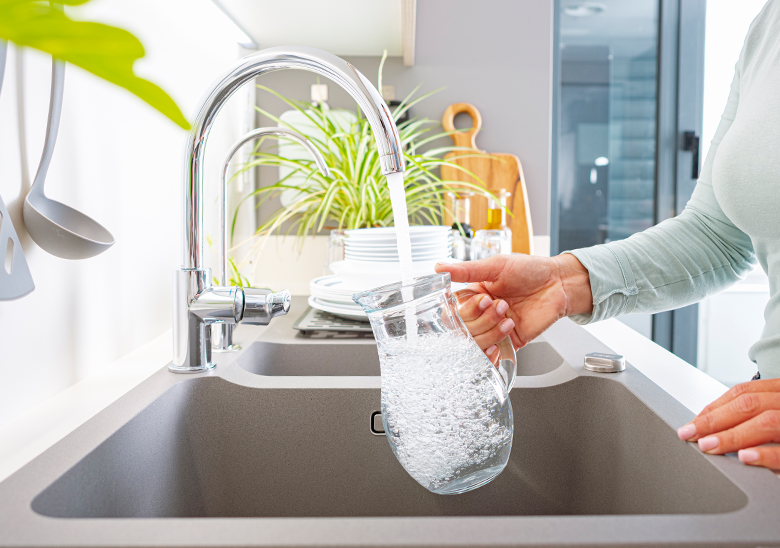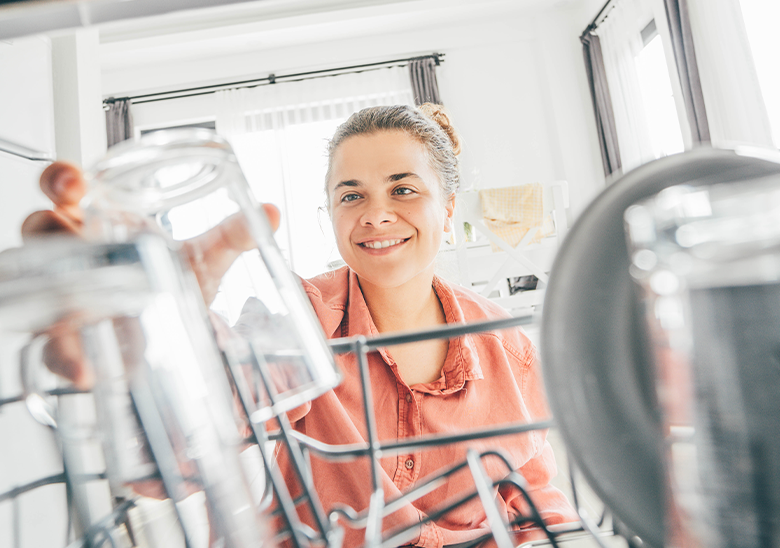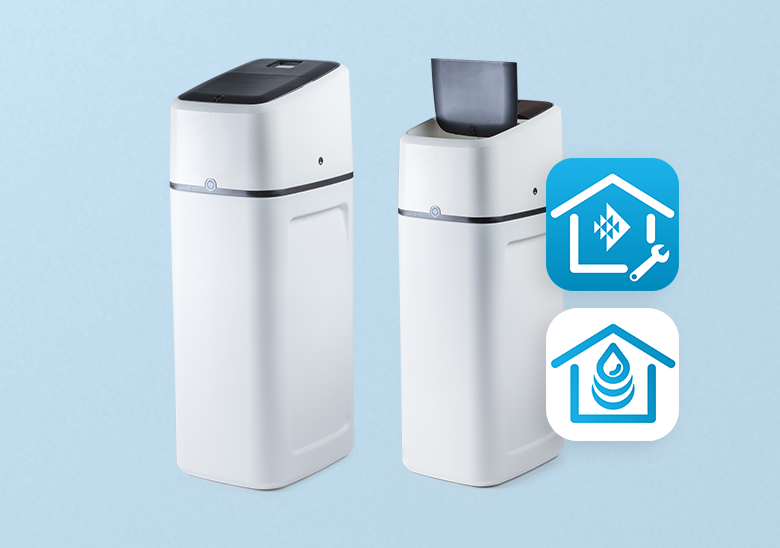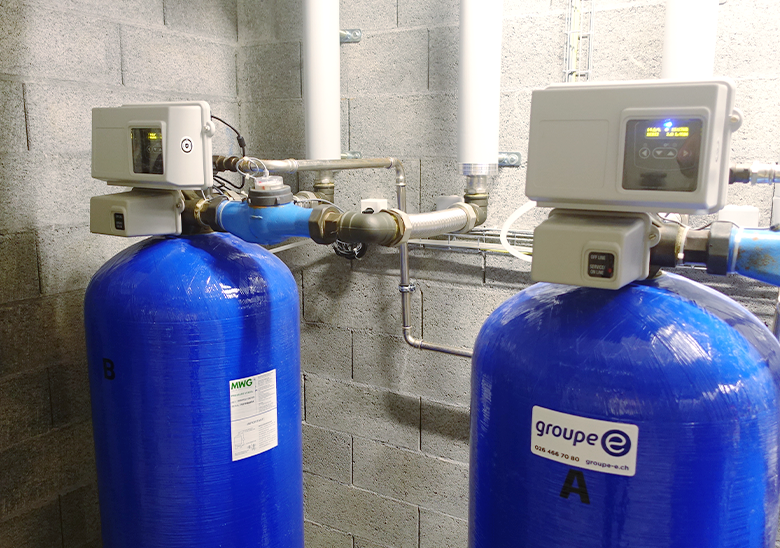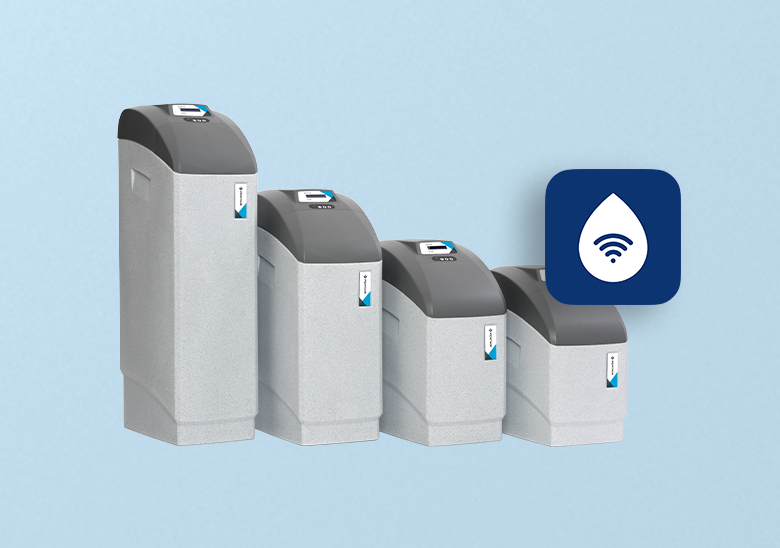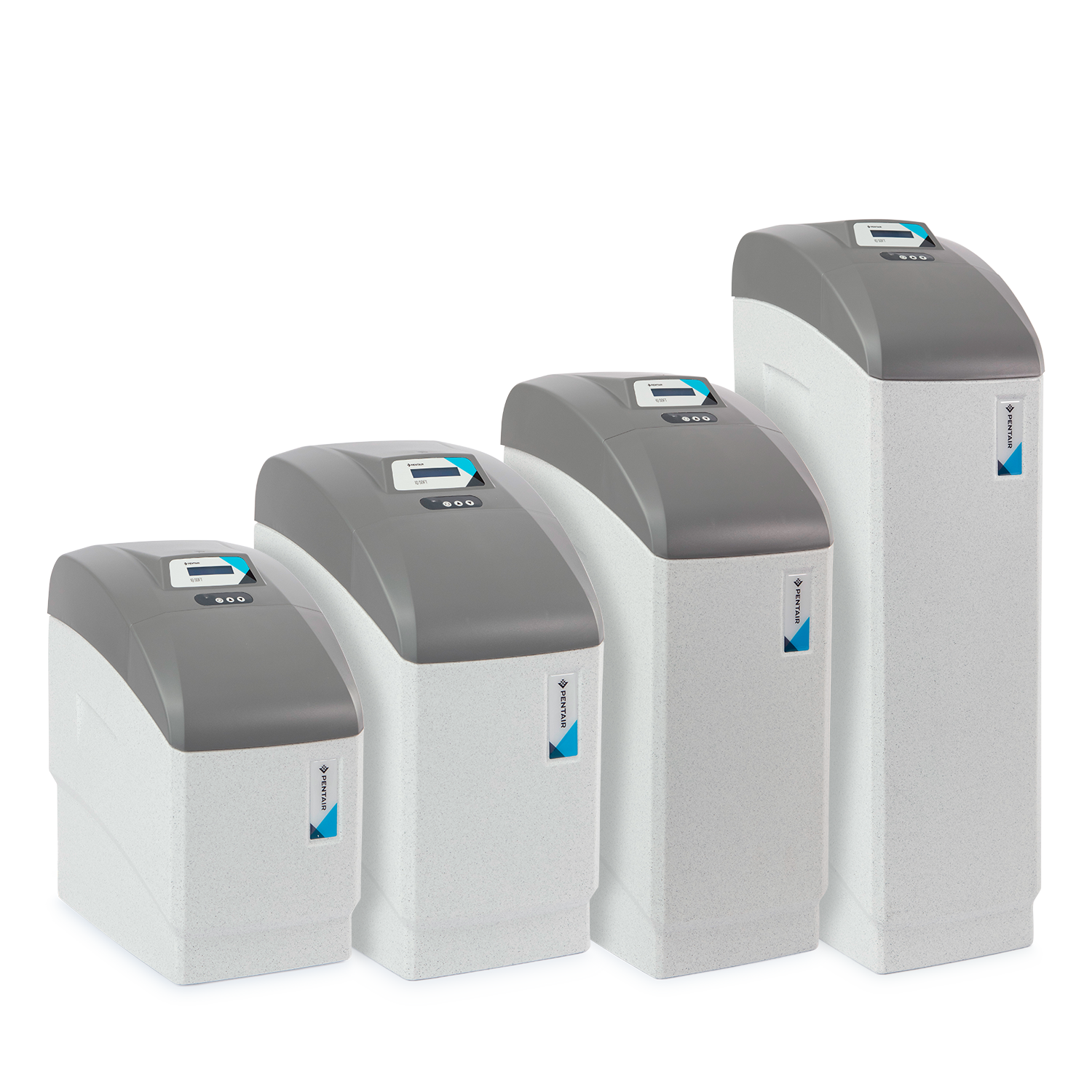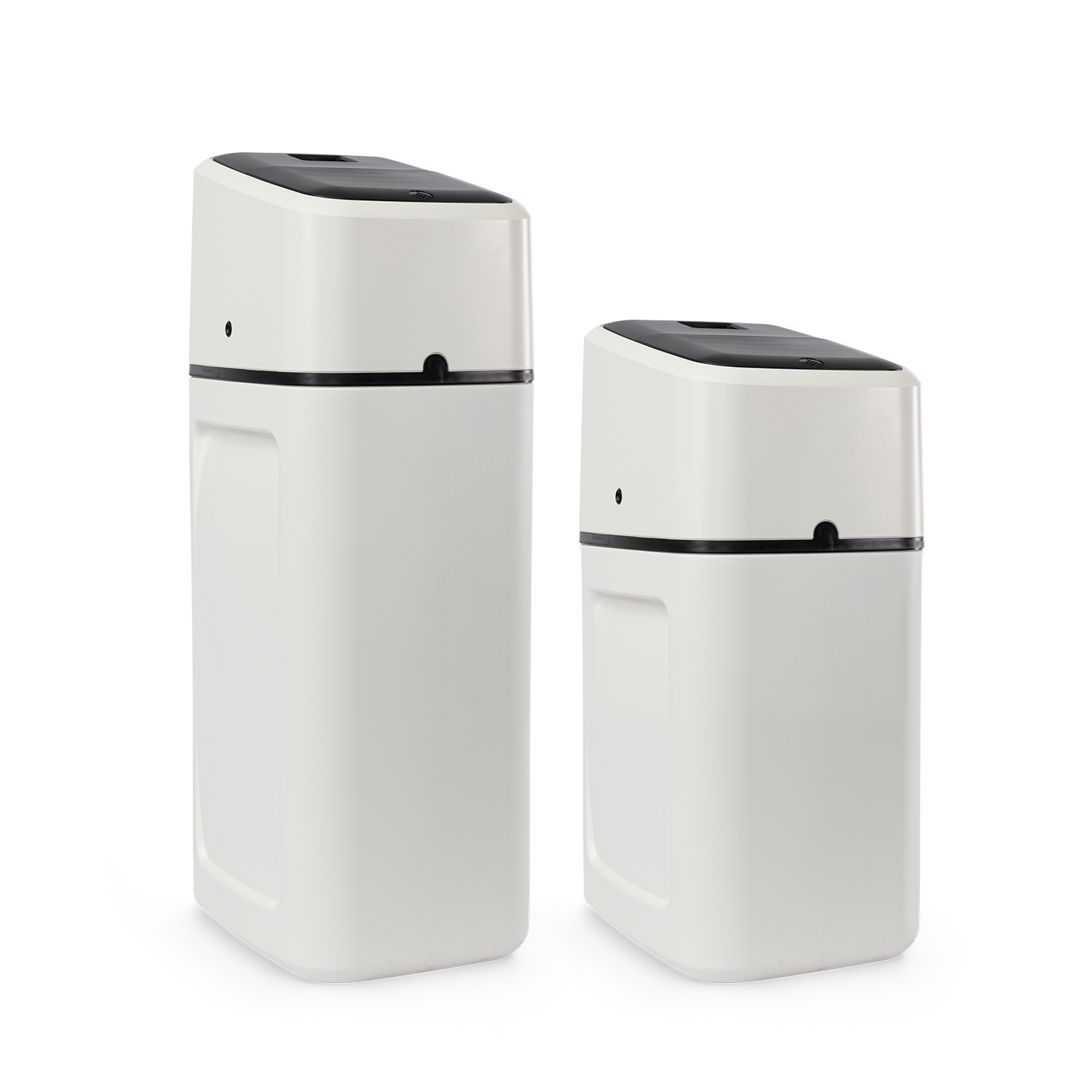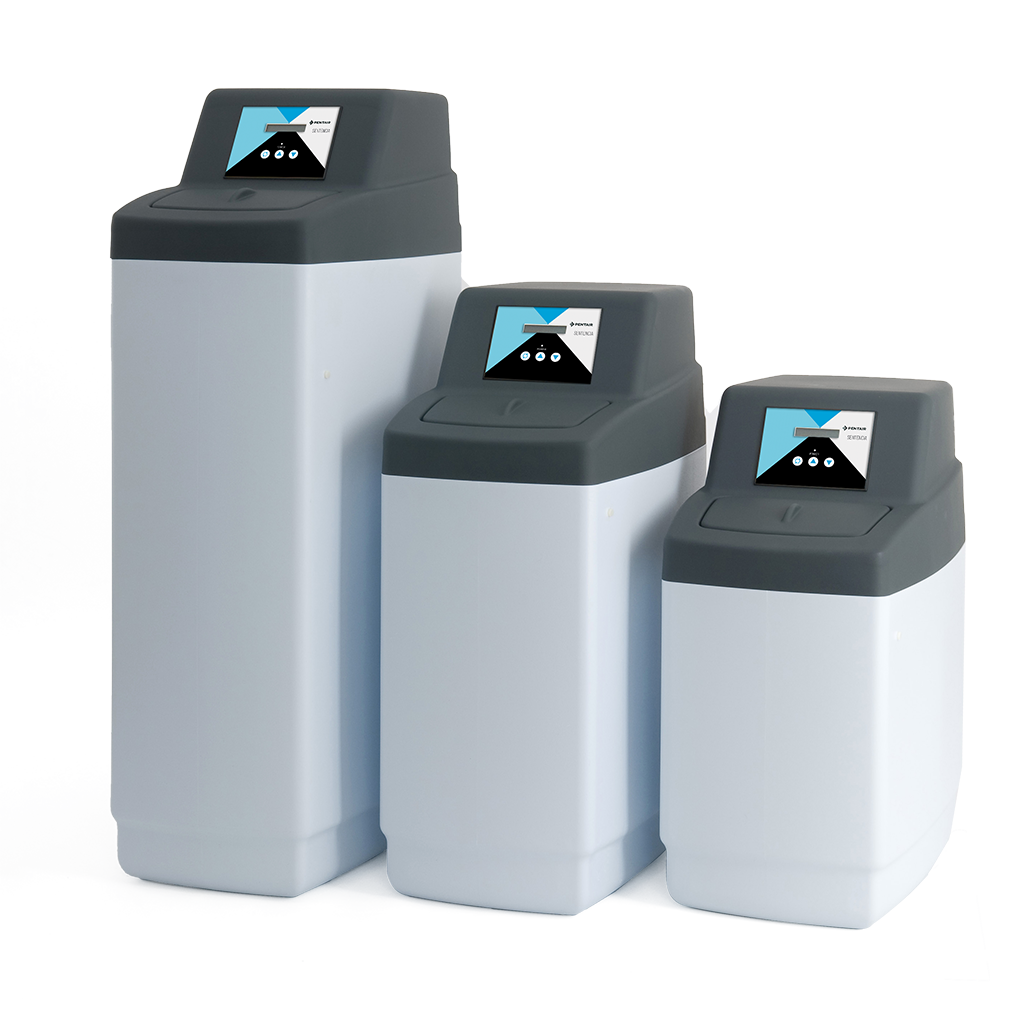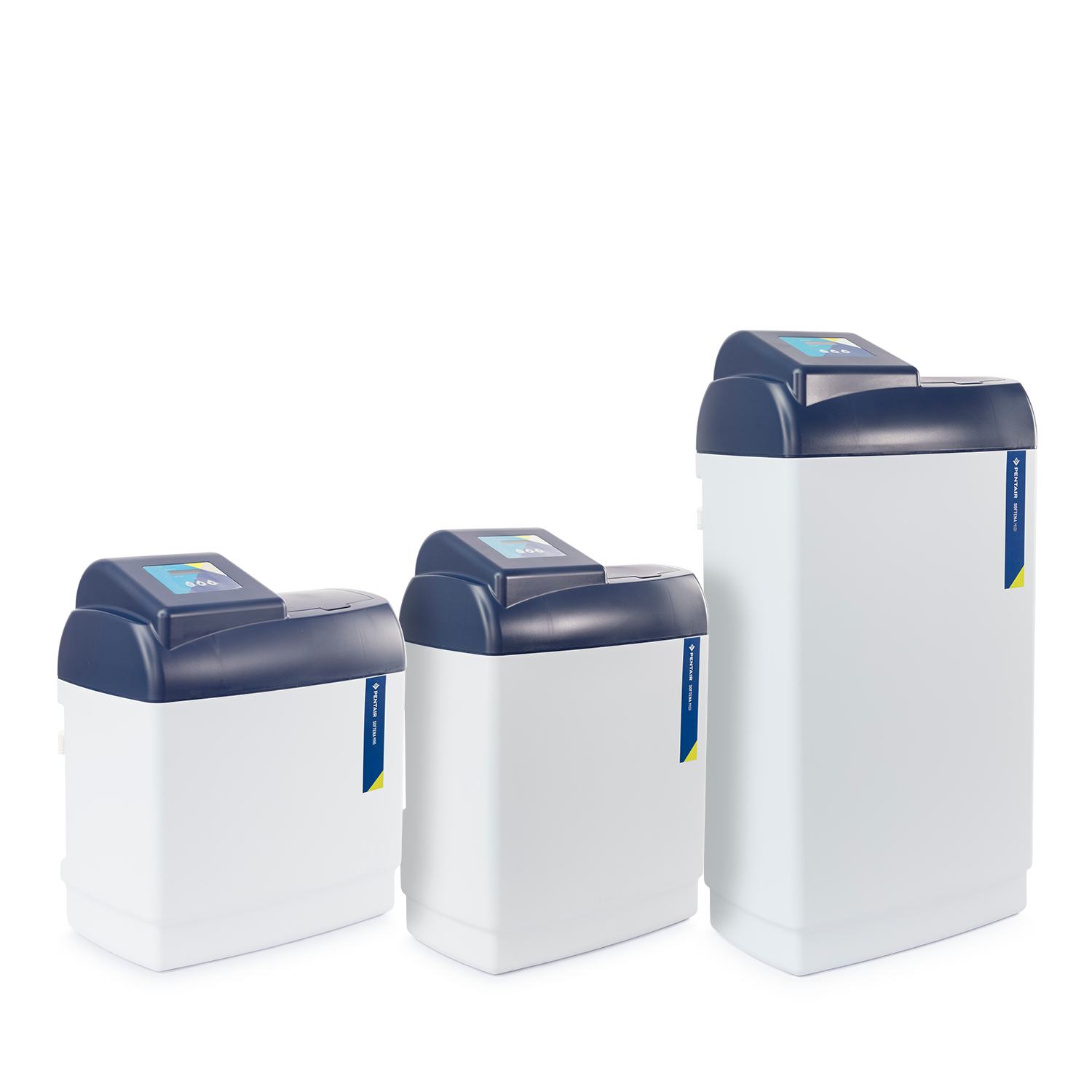Water is one of the most powerful solvents. Although it is difficult to see this over a short period of time, its ability to dissolve rock and sediment has nevertheless created some of the most spectacular landscapes in the world: the Grand Canyon is an impressive example.
But by dissolving the rock and limescale all the way to your faucet, the water is enriched with calcium and magnesium: it becomes "hard".
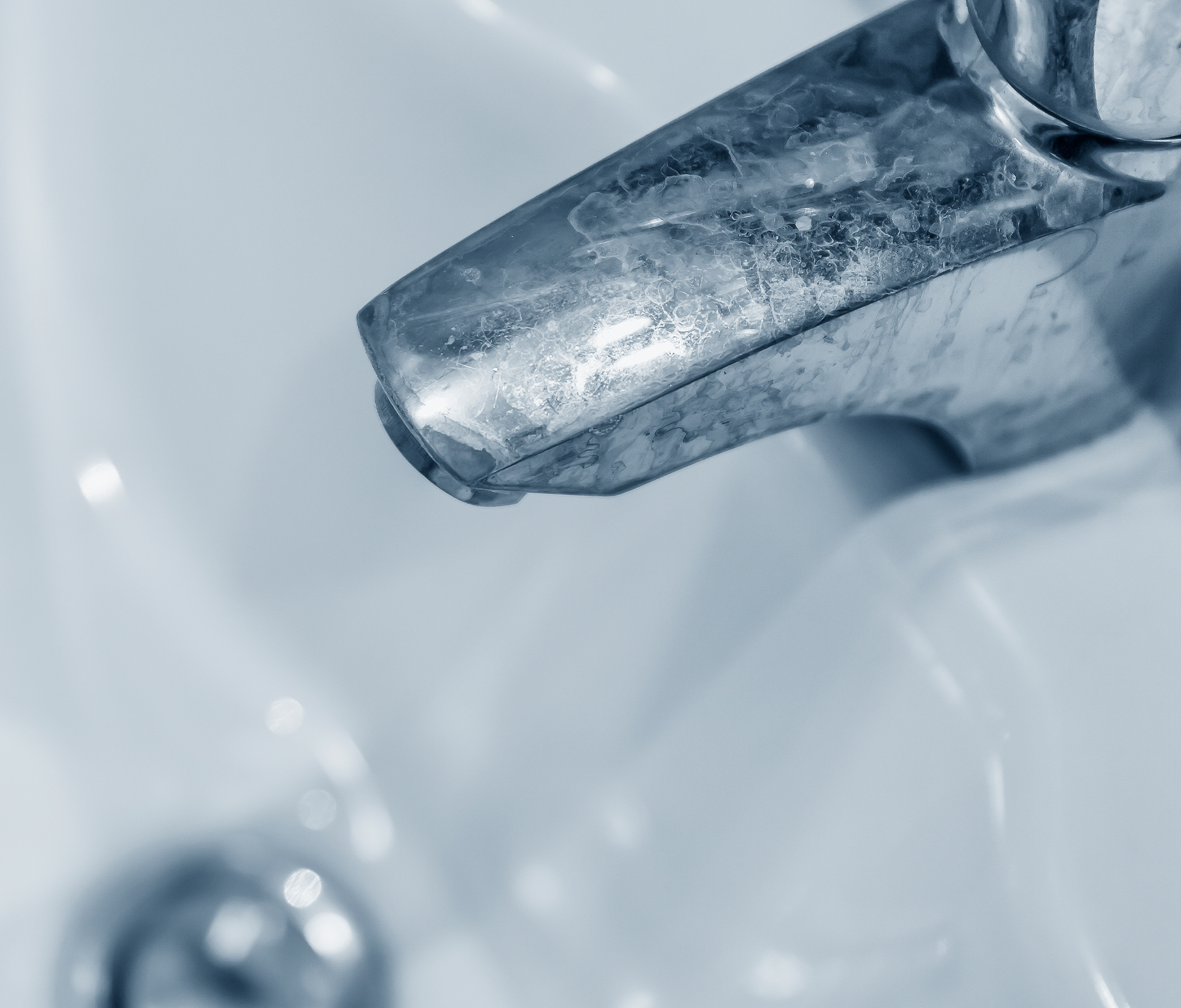
When this hard water evaporates, only the minerals it contained remain: this is how the limescale deposits form on your surfaces (on the kitchen sink, shower, tub, etc.) When this hard water evaporates, only the minerals it contained remain: this is how the limescale deposits form on your surfaces (on the kitchen sink, shower, tub, etc.) or inside your household appliances, at a point that can be harmful.
The solution Install a softener that will treat water at the point it arrives in your home to remove calcium and magnesium, specifically the calcium and magnesium “ions” (an ion is a transformed atom).
Operation of a salt water softener
A salt softener replaces the calcium and magnesium ions present in hard water with sodium or potassium ions from salt (NaCl): this exchange occurs inside the softener’s resin tank which will capture magnesium and calcium in exchange for sodium. The water is softer when it emerges and follows its path through pipes in the home.
This exchange takes place until the resin bed is saturated with calcium and magnesium: this is when the regeneration phase becomes necessary to recharge the capacity of the softener. This regeneration is carried out by rinsing with brine (a mixture of salt and water), thus requiring a regular refill of salt.
Magnetic “softeners”
Strictly speaking, a softener is an appliance that exchanges hard ions with soft ions and works thanks to an ion-exchange resin regenerated with salt.
Magnetic appliances will change the ionic state of the complexes responsible for hardness, thereby reducing their ability to make limescale deposits. This is a time-limited action: the effectiveness of this alternative largely depends on the distance between the appliance and the equipment to be protected. For this reason, the only reliable way to reduce water hardness is the conventional softener.
How to choose your home water softener

Choose a suitable size softener
Choosing the right size softener for your home or apartment This depends on your daily consumption and the water hardness in your area. Selecting a correctly-sized softener will allow you to optimise the capacity of your softener compared to the water consumed during regenerations.
Calculate the correct use
Our softeners are available in different sizes, named after calculations based on the average use of faucet water in a house. For example, smaller units will be recommended for “1-2 people”, larger units for “6-8 people”.
However, do not hesitate to contact a water professional in your area to calculate the hardness that must be treated daily in your home to make the best decision.
